Monasterium
Monasterium (Originalregel)
Object of the Game
At Monasterium, you as the head of a domicile school, try to put the novices entrusted to you in the monasteries, and thus build up an unmistakable reputation. In addition, you can fulfill the special orders of the monasteries and join the church window of your dom to also increase the fame of your school.
The Rules
You will find the complete rules here
Monasterium is played over three monasteries, each year consisting of as many rounds as players play. A convent year ends once each of you was a starter.
The interface
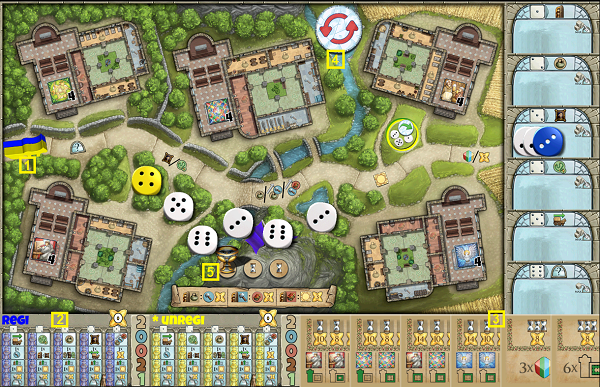
- Shipped
- Player tablets
- outgoing orders
- "New Cubes"
- Sand clock (annual indicator)
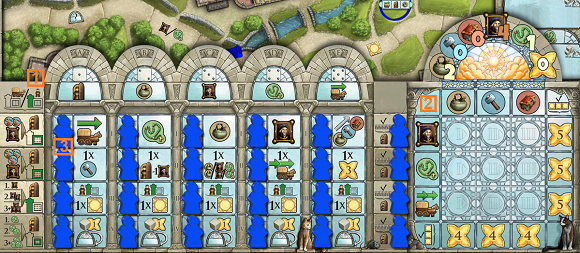
- Standard actions
- Church window area
- novices
You can drag or scroll up the player trays by wiping up or by pressing the mouse button.
Pull to the left or to the right shows the order and overview cards.
At the beginning, each player receives 1 personal cube in its color and, depending on the number of players, neutral cubes (5 cubes for 2 players, 3 for 3 players and 2 for 4 players), 2 influencing, 2 soup and 1 rosary plates.
Flow of the game
Each round consists of three phases:
1. Dice application phase 2. Action phase 3.
Dice application phase
In the cube insertion phase, the cubes are placed on the cubes of the schedule.
The starter starts, the other players follow clockwise.
When you're on the line, you'll be diceing with all your available neutral and personal cubes.
Then select a number and place all cubes with this number on the corresponding cube field. After that, the next player is on the line.
Every time you get back to the row, you dice your remaining dice again and place at least one dice (replacement is not allowed) - even if all other players have already placed their dice.
This goes reihum until each of you has placed all its available cubes.
Once all the dice of all players have been used, the action phase follows.
Once a round, you can use the "New Cube" plate and dice as many cubes of your last litter again if you are not satisfied with the result.
Action phase
If you're on the line, you'll find a cube on which at least either a personal or a neutral cube is located. You take dice down there and then execute actions with these dice one after the other. For each action you put a cube to the side - this is then consumed for this round. If you have consumed all the cubes you have taken, the next player is in the row. This goes reihum until all the cubes have been taken and consumed by all the cubes of the schedule.
The following rules are to be observed:
You must never take a personal cube of another player.
If you choose a cube on which both at least one personal and a neutral cube are located, you must always first take all your own personal cubes.
From the cubes 1 to 5 you can take up to 3 cubes per train. It is allowed to take less than 3 cubes, even if you could take 3 cubes.
From the cube 6 (joker) you can only take 1 cube per train.
During one round, you can also take cubes from the same cube field several times if there is at least one personal or neutral cube when you are on the train again.
For every cube you take, you can perform exactly one action. The standard action of the respective action column is always available to you. The standard actions are shown on the action plans and on the dice fields of the game plan.
You can unlock other options by sending novices. Once further actions have been unlocked in an action column, you can also use these actions immediately.
If you cannot perform any action with a cube, the action will fall.
Volunteering for a possible action is not allowed.
Standard actions:
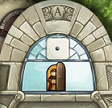
For each cube you use for this action, you can send a novice to a monastery.
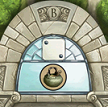
Take a soup plate for each cube you use for this action.

Take an influence plate for each cube you use for this action.
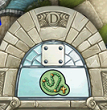
Take a rosary leaf for each cube you use for this action.
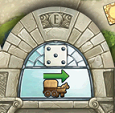
Per cube you use for this action, drag 1 field on your way with your Messenger.
Put the 6's cube on any action package of your action area. No action is assigned to the 6's cube itself. But you can do any action with a 6's cube.
With the Messenger:
On the way you can move your messenger forward. If the messenger continues from the last field, it will be inserted again on the first field and begins the path from the front.
If the Messenger enters or exceeds a bonus field, you will receive this bonus immediately.
In order to be able to send novices to a convent, the Messenger must stand in a field of the way connected with the desired convent.
Once you have sent a novice to the chapel of a monastery, this novice takes over the role of the messenger, that is, you can always send novices to these monasteries, no matter where the messenger is located.
You will receive the following bonuses immediately as soon as your messenger enters or exceeds a bonus field:

You can immediately execute any action (default or unlocked action).

You can immediately take either an influence or a rosary leaf from the general stock.

You can either take a soup plate or exchange a soup plate for a tool plate or exchange a tool plate for a book plate.

You can immediately take a church window leaf from any monastery. It is not necessary for you to be represented with a novice in the monastery from which you choose the platelet.

You can immediately take another personal cube you can use in the current round. Dice this cube immediately and place it on the corresponding cube field of the schedule. If you haven't used your "New Cubes" plate, you can still use it now to dice the cube again. If you don't want to take the personal cube, you can instead advance 5 fields on the prestige bar.
Sending novices
By means of the action "Send Novizen" you can send novices to the monasteries on the schedule and place them in different areas. You can generally send any novice from your own action field.
Each row stands for a particular monastery area and has different conditions.
Novices may only be sent to a monastery if one of the following conditions is fulfilled:
Your own envoy must stand at the time of sending out a road that is connected to the monastery where you want to place the novices.
You have already placed your own novice in the chapel in the monastery. In such a monastery you may send novices, regardless of the Messenger.
Novices from the top two rows (I and II) can only be sent in buildings. Novices from row III are provided for the chapel and novices from row IV are used in the junctions.
To send a novice, click the place where you want to send it and the novices on your player's tablet and confirm your selection above with ok.
Cloister
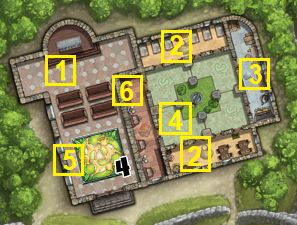
- Chapel
- profane building
- Workshop
- Cross-country
- Church window stack
Sending novices to a building (Series I and II)
There are three types of buildings:
profane building (soup), workshops (tool), common rooms (book)
In order to send a novice to a profane building, you need an influence plate and two (for the top row) or three (for the second row) soup leaves.
For the workshops, you also have to give an influence plate and, depending on the row, two or three tool plates.
In order to accommodate a novice in a common room, two or three book plates are necessary in addition to the influence plate.
A novice may be placed in each building.
Sending a novice to a building brings you an immediate bonus:
Novices in a profane building bring immediately 1 point and 1 tool plate.
Novizen in a workshop bring 2 points as well as 1 book plate.
Novices in a common room bring 3 points as well as 1 church window leaves from the monastery where the novice was used.
Sending novices to the chapel (series III)
To send a novice to a chapel, select a figure from row III. If you send a novice to a chapel for the first time, you only need 1 influence plate.
In the second novice you send into a chapel, you have to give 2 influence plates and 3 influence plates from the third novice.
In each chapel several novices may stand, both your own and those of other players. However, there is a maximum number that varies depending on the number of players: for 2 players, max. 4 novices may be in a chapel, for 3 players up to 6 and for 4 players a maximum of 8 novices.
Unlock actions (Series I, II and III)
As soon as novices of the first, second or third row are sent, the actions of the respective field are switched off. This means that the actions of a field without novices can now be selected as an alternative to the standard action of the column. So you can always decide whether you want to use your cubes for the standard action or an unlocked alternative action of the corresponding action column.
If you have multiple cubes available, you can split them to different actions (standard and unlocked actions) of the corresponding column. It should only be noted that activated actions of the second and third rows per train can only be used once. However, you can select standard actions as well as unlocked actions of the first row as often as desired.
Sending novices to the Cross (Serie IV)
You can only use novices on a free field of the crossroads if an adjacent building is already occupied with one of your novices.
To send a novice to the crossroads, select a figure of the bottom row and give off rosary leaves. At first sending, 1 rosary leaves suffice. For the second time, you send a novice to a cloister, then you have to leave 2 rosary leaves, and from the third novice from row IV you have to leave 3 rosary leaves. The selected novice is then placed on a permitted cross-country field.
After you have sent a novice to a crossroads, the action plate will be turned around:

For each cube used in the corresponding column you get 1 point.
If dice are still on the dice plate, when you turn it around, you will also receive 1 point for these dice.
Creating church windows
You can get church windows in three different ways:
By entering or crossing the corresponding field on the way.
In this case, you may take any platelet - whether you are represented or not with a novice in this monastery.
By sending a novice into a community space.
In this case, you can only take the platelet from the monastery you just sent the novices.
The alternative action of row III.
In this case, you can take a church window leaf from a chapel where you are represented with your own novice. If you are represented in several chapels, you may choose from them.
The following rules must be observed for the installation of a church window plate in the church window area:
A church window tray must always be installed immediately in the church window area.
During installation, you can select the row (first, second or third row).
However, you must always place the plate on the free field lying farthest left. So at the beginning always in the first column.
In each field of the church window area, a maximum of 1 platelet may be located. Stacking is not allowed.
A once placed plate remains until the end of the game.
In each row and column, only different plates may lie. From each monastery a maximum of 1 platelet per column or Be placed row.
Can you not take a platelet (for example, because there is no more) or do not insert it (for example, because in the column or row there is already a platelet of the same monastery), this action or Partial action.
If you place a plate in your church window area, you will receive a bonus immediately. The bonus is displayed to the left of the row or above the column in which the plate was placed. You choose one of them.

If you complete a row or column in the church window area, in addition to the chosen bonus, you will receive the points specified right next to the row or below the column.
Additional novices
1 Novize is placed right next to the rows I-IV of the action area. If you find it in the course of the game to unlock a row completely, i.e. to send out all 5 novices of a row, you may also send the novices standing next to this row immediately.
You can freely choose whether you want to send the novices to a building, to the junction or to a chapel. You don't have to give a plate. However, you must adhere to the other rules for sending.
Performance
If you are able to fulfill one of the six outstanding orders in the course of the game, you may immediately place one of your markers on the corresponding order card and receive points for it.
For orders of category A and B, the points are higher, the earlier you fill a job. If you fill the order in the first year of the convent, then you place one of your markers on the left field with the hourglass and immediately receive the given point number.
In the second year of the convent, the marking plate is placed on the middle sand watch field and the points indicated there are removed.
In the third year of the convent, the marking disc comes to the right of the hourglass field and the number of points of this field is removed.
For orders of category C, they must be fulfilled at any time, i.e. before the end of the lot, in order to obtain the points. If you fill an order of category C, then place your marker disc in the top of the card.
Each one of you may fulfill every mission once. Thus, markers of several players can be placed on a field.
Orders of category A and B
For the orders of category A and B, you must have sent 3 novices to certain areas.
On the map it is shown in which monastery which area (capelle, building and junction) must be occupied.
Example:

Orders of category C
Example:
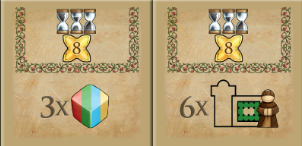
Make it to get all 3 personal cubes
Send at least 6 novices on cross-country fields
End of the Round
If there are no other cubes on the cubes of the schedule and all possible actions have been executed, the round ends and everyone receives their personal cubes, as well as the corresponding number of neutral cubes. The next player in the clockwise direction becomes starter.
Year
A monastery year ends when each of you was a starter. Then the hourglass will be crazy in the field for the next convent year. At the end of the third convent year follows the final evaluation.
Final assessment
Convent evaluation
For each monastery is determined individually, who sent most novices there.
It includes all novices in buildings, in the crossroads and in the chapel. The one of you who has provided most novices to a monastery will receive 5 points.
At balance, all players with most novices receive 5 points.
Chapel evaluation
For each one of you it is determined in how many different monasteries at least one of your novices is located in the chapel. Depending on the number of different monasteries, you get the following points: 1 monastery = 1 point, 2 monasteries = 3 points, 3 monasteries = 6 points, 4 monasteries = 10 points, 5 monasteries = 15 points
Cross-sectional evaluation
The crucifixion is determined for each individual monastery and for each one of you as follows: number of your novices on the crossroad multiplied by the number of your novices in the chapel. The result is taken once 2.
Value added
Finally, you still evaluate your remaining unused goods.
Each tool plate counts 1 point.
Each book plate counts 2 points.
Soup, influence and rosary leaves are combined and divided by 2. The rounded result is the number of points you receive for this.
Those who are farthest in front can boast their dom school as the most brilliant. With a match, several players are awarded the winner.

